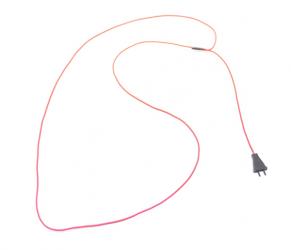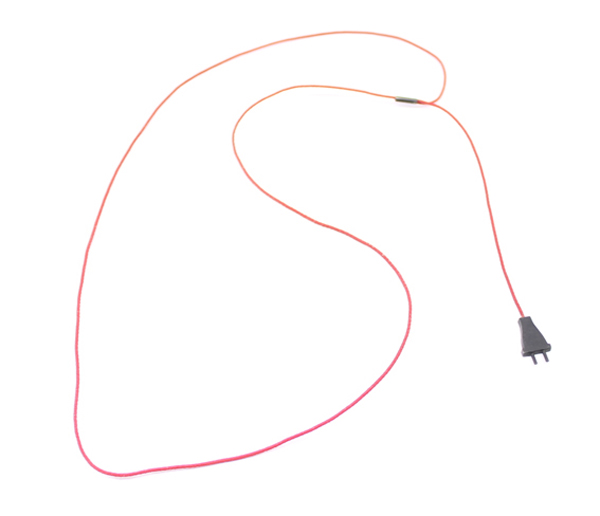
Susan Cummins: Henriette, what is your story? What compelled you to become a jeweler, and what was your path to learning how to do it?
Henriette Schuster: I have known I wanted to be jeweler since the age of six or seven. My grandfather built pianos, and I used to watch him at work when he handmade the keys using ivory, ebony, felt, bone, glue, and shellac. He didn’t say much, but one day he handed me a pair of his working pliers and a piece of wire. It was here that I began making jewelry.
I went against my parents’ wishes by dropping out of my studies in architecture and following the recommendation of Hermann Jünger to take up training in gold- and silversmithing at the renowned Neugablonz Fachschule für Glas und Schmuck (Neugablonz College for Glass and Jewelry). After completing my degree, I was accepted into the Academy of Fine Arts in Munich as one of Otto Künzli’s first students in 1991. I graduated in 2000. Simultaneously, I have worked in my own studio in Munich since 1988.

Susan Cummins: Henriette, what is your story? What compelled you to become a jeweler, and what was your path to learning how to do it?
Henriette Schuster: I have known I wanted to be jeweler since the age of six or seven. My grandfather built pianos, and I used to watch him at work when he handmade the keys using ivory, ebony, felt, bone, glue, and shellac. He didn’t say much, but one day he handed me a pair of his working pliers and a piece of wire. It was here that I began making jewelry.
I went against my parents’ wishes by dropping out of my studies in architecture and following the recommendation of Hermann Jünger to take up training in gold- and silversmithing at the renowned Neugablonz Fachschule für Glas und Schmuck (Neugablonz College for Glass and Jewelry). After completing my degree, I was accepted into the Academy of Fine Arts in Munich as one of Otto Künzli’s first students in 1991. I graduated in 2000. Simultaneously, I have worked in my own studio in Munich since 1988.

Henriette Schuster: My training in Neugablonz had provided me with the skills to be a gold- and silversmith. That training is not a requirement but a good basis for further studies at the Academy. Entering the Academy meant leaving behind the safe terrain of the trade, even the jewelry, and facing the adventure of becoming an artist.
Artists are often envied for their freedom to do what they please, to think and work freely, but dealing with this kind of freedom is quite a challenge, and I realized this very quickly. To me, it means: paying attention to every detail; taking work and looking at it from another perspective or from upside down; always starting again, and not giving up but knowing when to give up; and taking time to find your own dialogue with your work, believing in it, and always double-checking. Find and hide. See and be seen. Fear and be brave.
For the past 13 years, I have worked in my small studio where I also have a gallery space. Here, I exhibit the works of other artists, not always jewelry artists. It is here, during the Schmuck fair in Munich, that I am able to reach an international public and to invite colleagues such as Lisa Walker, Karl Fritsch, Helen Britton, David Bielander, Volker Atrops, and most recently Doris Betz.
What leads you to pick the objects you include in your jewelry, such as balloons, cups, and mittens? Have you begun doing more abstracted shapes recently? Why? Does jewelry reflect the nature of the person who made it? Does yours? How?
Henriette Schuster: My work has always had a personal reference. I find metaphors for my memories, experiences, observations, difficulties, hopes, and dreams. I’m interested in the relationship (co-existence) of two elements and the balance they strike, how they move and fit together. I also apply these considerations to abstract geometrical forms. The abstract form allows a more spontaneous and playful way of working. These two themes have been the basis of my work ever since my studies.
Your jewelry is almost invisible. These days, the big and ambitious seems to steal the limelight, so why do you persist in doing things that don’t draw attention?
Henriette Schuster: When I hear this question, I remember that as a child I used to play the piano in the basement, hoping that someone would hear me….
Almost Invisible is what I called my drawings, and Katie Scott suggested that this should be the title of my exhibition at Gallery Funaki. I look upon the large stage from a distance, and at times I’m jealous, but it drives me crazy and exhausts me to take part in a big performance. And I can wait. I love working on my own. This is probably not a wise career choice, and some people even think I’m arrogant. But I feel nervous when people from all over the world who know my work come to visit. Last year, a visitor commented, “I love your work. It’s so humble.” This really touched me.

Can you recommend something you are reading or that you have seen recently?
Henriette Schuster: Fair Wind – Notes of a Traveller by Bernadette Weigel from this year. It is a poetic diary of her journey from Vienna to Kazakhstan using a Super 8 camera. Finding Violet Park by Jenny Valentine is a journey of self-discovery of a 16-year-old boy.
Thank you.




